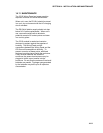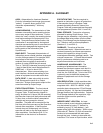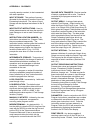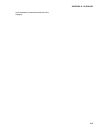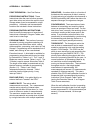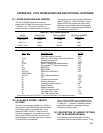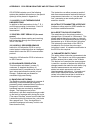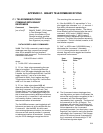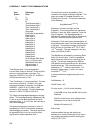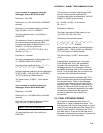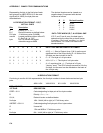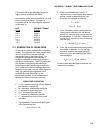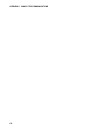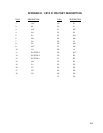APPENDIX B. CR10 PROM SIGNATURE AND OPTIONAL SOFTWARE
B-2
CR10 PROM contains one of the following
options then detailed information on the special
option(s) will be placed in Appendix H.
13,14 ADD R, S, & B THERMOCOUPLE
LINEARIZATIONS
In addition to the linearizations for the T, E, J,
and K thermocouples, Instructions 13 and 14
have the R, S, and B thermocouple
linearizations.
15 CONTROL PORT SERIAL I/O (for smart
sensor)
This Instruction allows sending and receiving
half duplex data through the control ports at
300 or 1200 baud.
105,106 SDI12 RECORDER/SENSOR
Instruction 105 allows the CR10 to use its
control ports to collect data from an intelligent
sensor which uses the SDI12 communication
protocol.
Instruction 106 allows the CR10 to behave as
an SDI12 sensor.
62 COVARIANCE/CORRELATION
This Instruction calculates 1) means, 2)
variances, 3) standard deviations, 4)
covariances and 5) correlations for a set of
input values and stores the results in Input
Storage. Subintervals are allowed for
convenient high pass filtering.
81 RAINFLOW HISTOGRAM
The Rainflow counting algorithm is a means of
estimating cumulative damage fatigue by
processing strain measurements to produce a
histogram in which closed stress/strain
hysteresis loops are counted by amplitude
ranges. The histogram can be two
dimensional, with each amplitude range sorted
on the basis of average strain during the cycle.
(The name, Rainflow, comes from the idea that
a strain/time plot with strain as the y axis looks
like a pagoda roof. Then, the algorithm is
somehow analogous to the way in which rain
flows down the roof.)
The Instruction can either process a swath of
data from measurements made with the burst
measurement instruction, or it can be used "on
line", processing a new reading with each
execution interval.
99 SATELLITE TRANSMITTER INTERFACE
Interface to allow output to GOES satellite via
the Valcom satellite transmitter.
64 Hz RESET ON PULSE COUNTERS
The reset interval on the pulse counters is
changed from 1/8 second to 1/64 second. This
allows reading the pulse counters on intervals
shorter than 0.125 second and allows counting
frequencies up to 16 kHz with the 8 bit option.
The quiescent current drain of the CR10 is
increased to 5 mA when the pulse count
instruction is used. A hardware modification to
the CR10 is also required.
*4 PARAMETER ENTRY TABLE
This option allows instruction parameters to be
flagged. The values to use for the parameters
are then entered into a table in the *4 Mode.
This feature is of use when the same program
is used for a number of stations but individual
changes need to be made for each station (e.g.
identical measurements are made at each
station but certain sensors do not have
interchangeable calibrations). It is easier and
safer to train someone to enter the correct
values in the table format than it would be to
have them attempt to alter the program.



